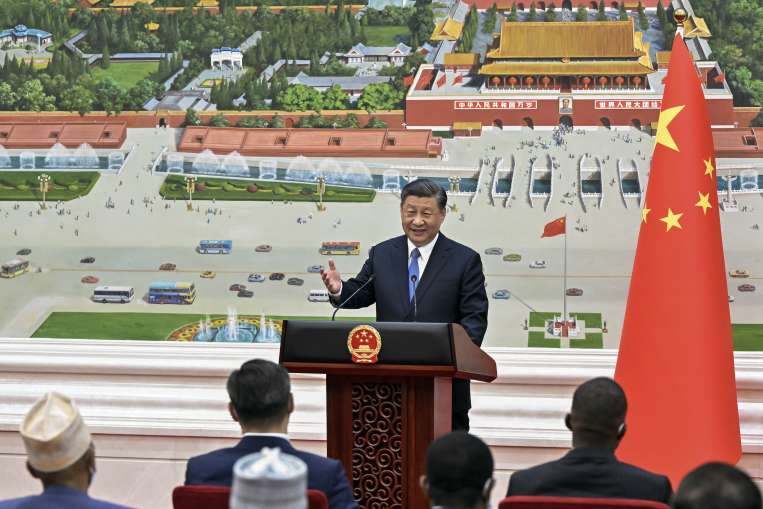
Xi Jinping, President of China
The world has been under the rule of western countries for a long time, but China now wants to break this supremacy of America and western countries. China is rapidly increasing its penetration in Central Asia to become an alternative to Western countries. There is also a proof of this that when the leaders of ‘Group of Seven’ (G7) countries were preparing for the recent summit in Japan, at the same time Chinese President Xi Jinping visited the Central Asian countries Kazakhstan, Kyrgyzstan, Tajikistan, Met his counterparts from Turkmenistan and Uzbekistan. Central Asia is crucial to China’s efforts to become an alternative to the US-led liberal order in which it is unquestionably dominated.
Xi outlined the vision of a “China-Central Asia community with a shared future” based on the four principles of mutual assistance, common development, global security and lasting friendship during the meeting with counterparts from Central Asian countries. Although relations between China and Central Asia are often viewed in the context of security and development, they also have a political dimension, as reflected in the Xi’an summit and initiatives for regional cooperation. These initiatives propose building links between Chinese ministries and government agencies and their counterparts in Central Asia, increasing academic and cultural exchanges, and creating mechanisms such as the Central Asia-China Business Council. This is likely to further strengthen China’s role in the region.
China is increasing its scope like this
In return, China will work to shield most of Central Asia’s authoritarian leaders from economic and political pressure from Western countries trying to move them toward democracy, and to protect their sovereignty and territorial integrity from any Russian adventurism. Will do Summit Achievements During the summit, 54 agreements were signed, 19 new cooperation mechanisms and platforms were created, and nine multilateral documents including the Xi’an Declaration were produced. Historically, Russia has been Central Asia’s main partner, but it can no longer compete with Chinese investment and construction contracts in Central Asia, which since 2005 have been around $70 billion. Shift from Russia to China The shift towards China is reflected in the declining importance of Russia’s regional integration project – the ‘Eurasian Economic Union’, compared to China’s global ‘Belt and Road’ initiative. The ‘Belt and Road’ program of infrastructure investment was launched by Xi in Kazakhstan in 2013 and since then the region has drawn closer to China not only economically, but also politically.
America worried about China’s move
With the Russian “Northern Corridor” now largely closed as a result of Ukraine war-related sanctions, the so-called “Middle Corridor” has become increasingly important not only to China but also to the G7 countries. The central corridor starts in Turkey and passes through Georgia and Central Asia. Another option with similar geopolitical significance to Afghanistan’s role is transport through Afghanistan to the Arabian Sea via the Pakistani port of Gwadar. In the long term, a route through Afghanistan is in the interest of both China and Central Asia. It will contribute to (but also depend on) stability and security in Afghanistan. The enthusiasm with which the presidents of the five Central Asian countries have welcomed these initiatives shows their willingness to move closer to China. However, it remains to be seen how sustainable or popular this approach will be given the anti-China sentiment in the region.
[ad_2]